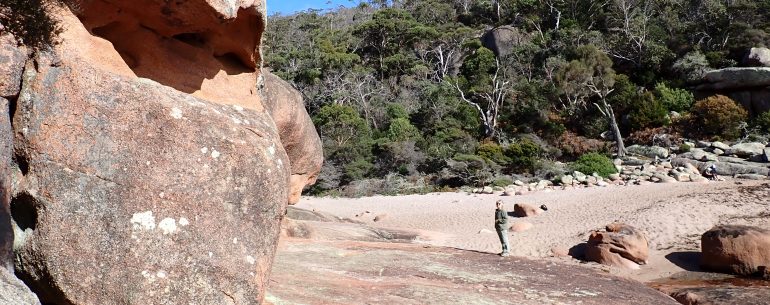With another day staying at Freycinet, we decided to explore a little further afield. We started though with a browse around a couple of other sites in the National Park. We started with Honeymoon Bay – perhaps not entirely appropriate for us, but we could see the appeal. A beautiful small bay …..
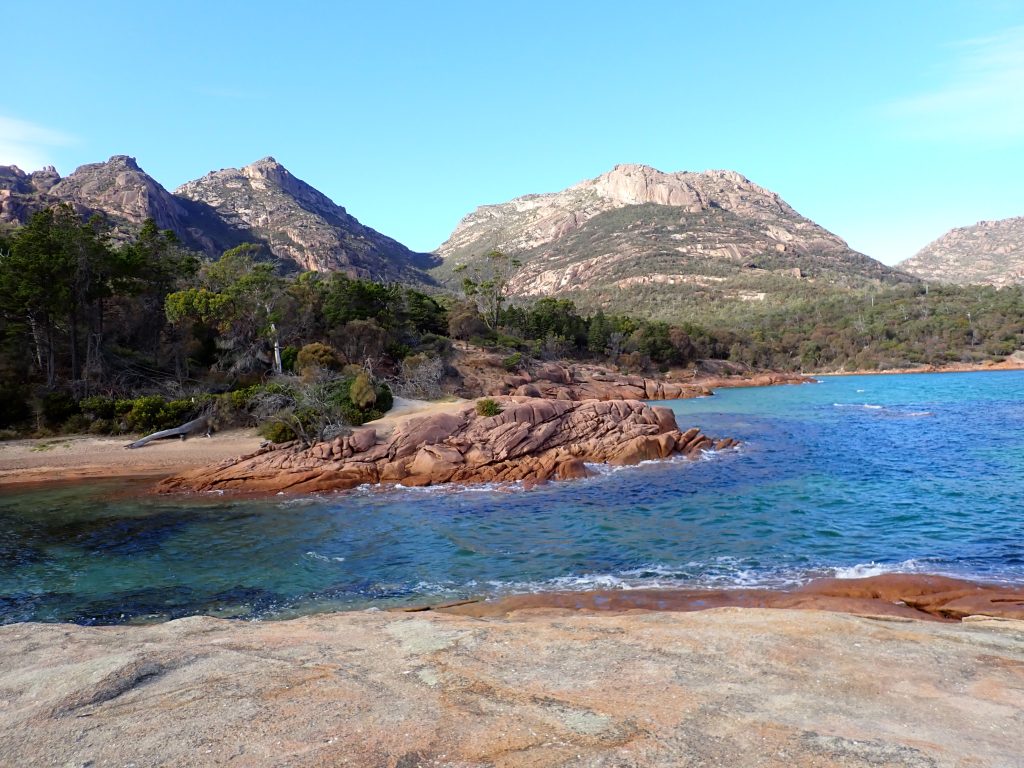
The next stop was Sleepy Bay and this time, the name was perhaps a little more obvious. The walk down to it took around 15 minutes around the coast and the bay itself was a beautiful little hidden beach with a small creek running down to it. The surrounds were littered with enormous granite blocks, several with intriguing hollows carved out from them.
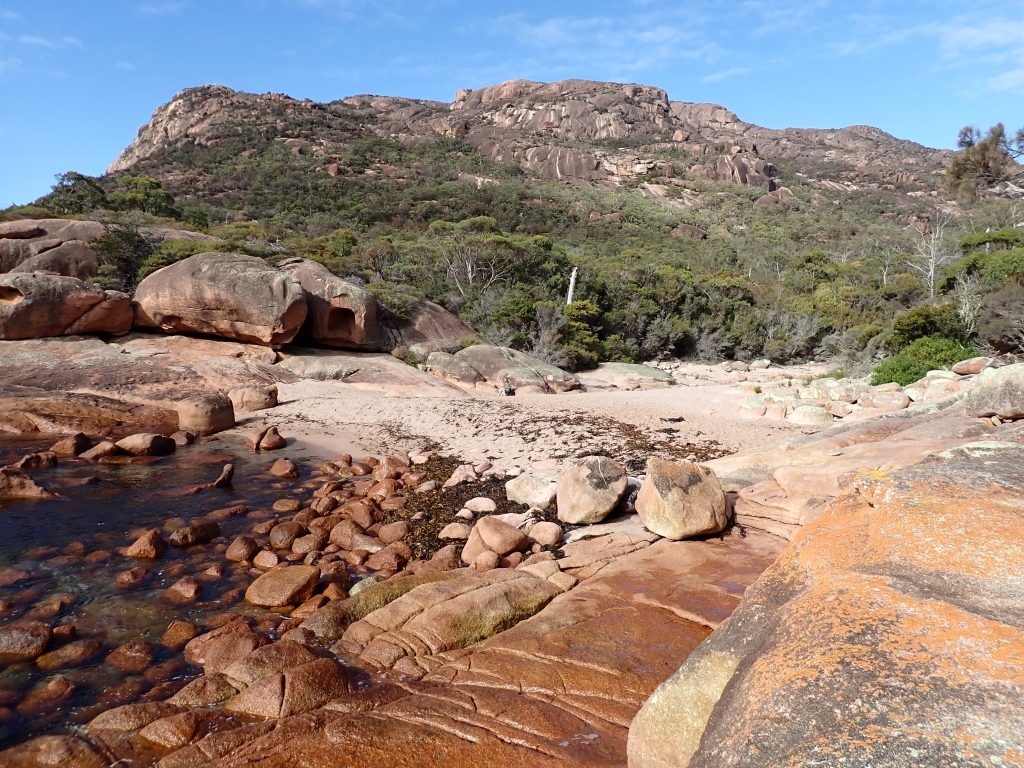
The final stop on the Freycinet Peninsula was at the Cape Tourville lighthouse. The lighthouse had a boardwalk around it giving excellent views to the north and south along the coast. Looking south gave an excellent view of Wineglass Bay and the Hazards. The names of both of these have their origin in the whaling industry. The peaks are named The Hazards after the American whaler Richard Hazard. He was whaling in the region around 1824 in his boat named Thalia. As European settlement in the region increased they realised the potential for whaling. The Southern Right Whale migrated past the peninsula on its way north from Antarctica and the whalers made the most of this. It is from this practice that Wineglass Bay gets its name. While we might assume that the shape of the bay was the origin of the name, it was actually named from the fact that the whalers would harpoon the whales and then bring them into the bay to butcher them. The bay would turn red with blood, just like wine in a glass.
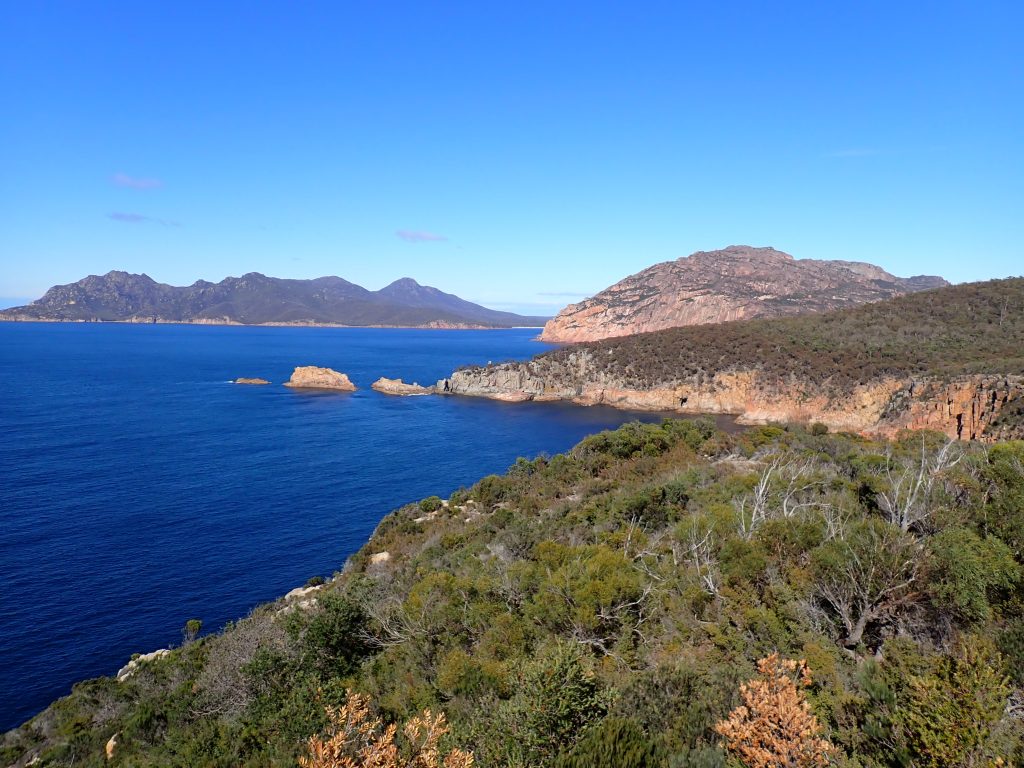
Walking around the lighthouse the information boards told us about the various animals we might expect to see and a number of these were lizards. Right on cue we saw one of them – White’s Skink. This is named after the naturalist John White – an Irish botanist and collector. The lizard is omnivorous and can eat meat, insects or plant matter – even strawberries or raspberries if they can find them.
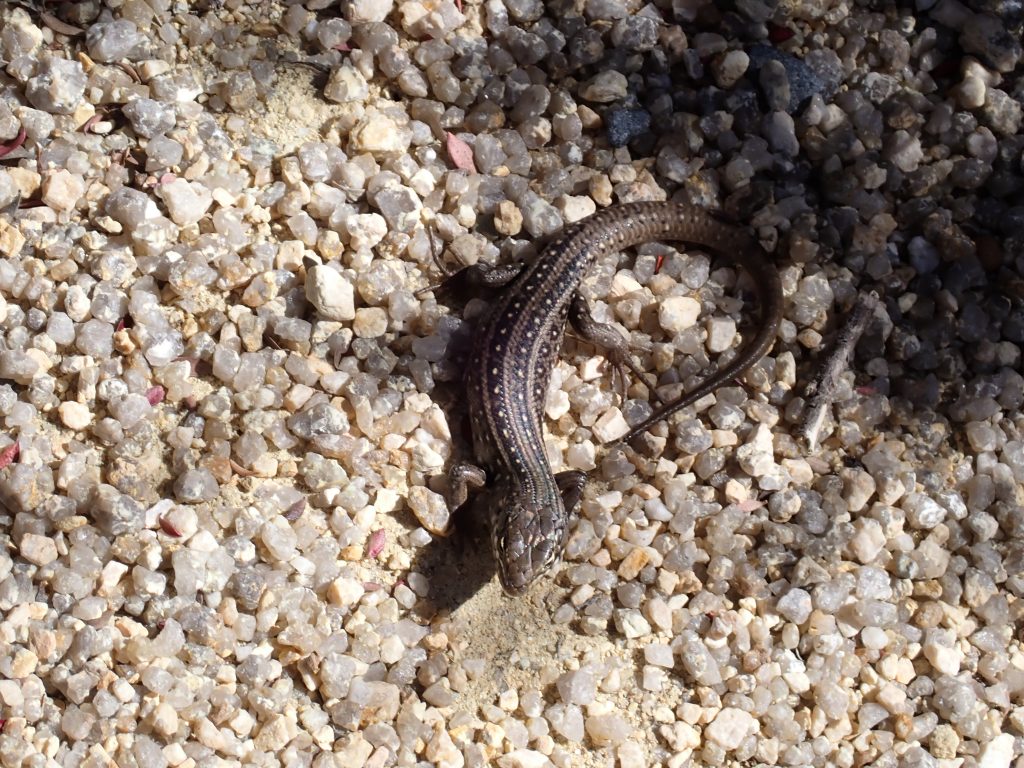
Getting back to the car park, we were then faced with another example of the local fauna – a Bennet’s Wallaby. Quite what it was doing in the car park we weren’t sure as it didn’t seem to have any fear of us, but perhaps it has become over-familiar with people.
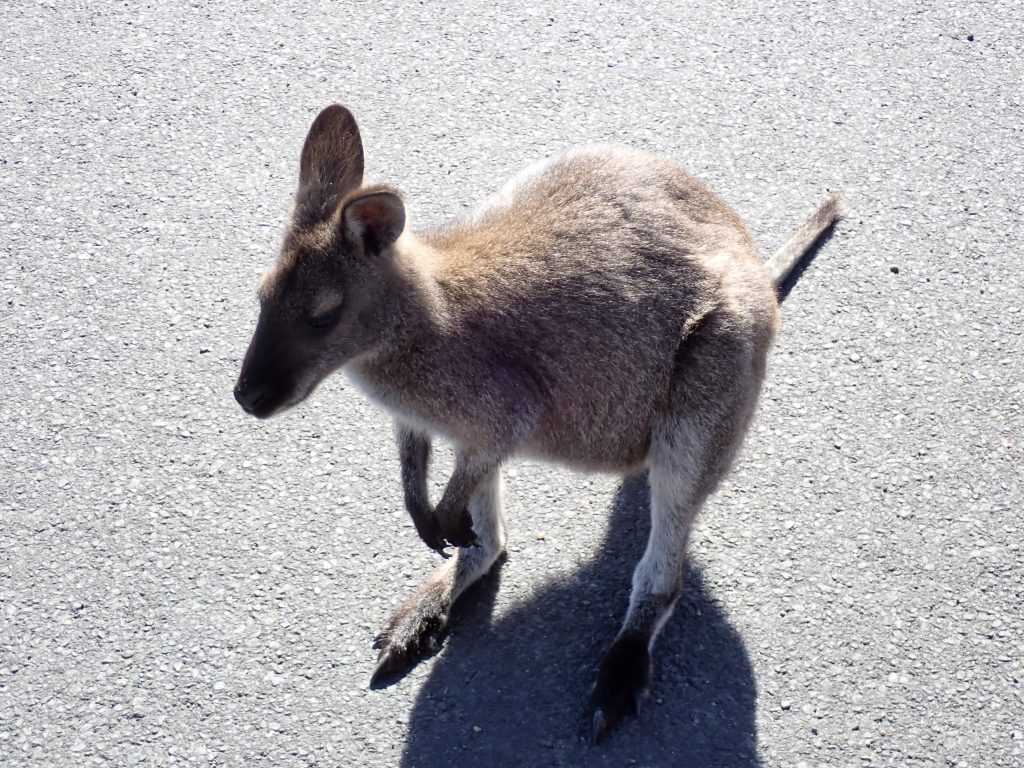
After a break back at the apartment we then headed north to Bicheno and on to the Douglas Apsley National Park. This had been recommended by the woman in the National Parks office and so we thought we would try. The first part of the walk (around 20 minutes) was through to a lovely waterhole and after crossing the stream on the rocks we headed towards Apsley Gorge. We made it around half way there, but I then called it a day. The terrain had been steep, but very uneven and my knees were passing their own comment on what they thought of it, so with the prospect of a lot more down, up, down to go, we called it a day.
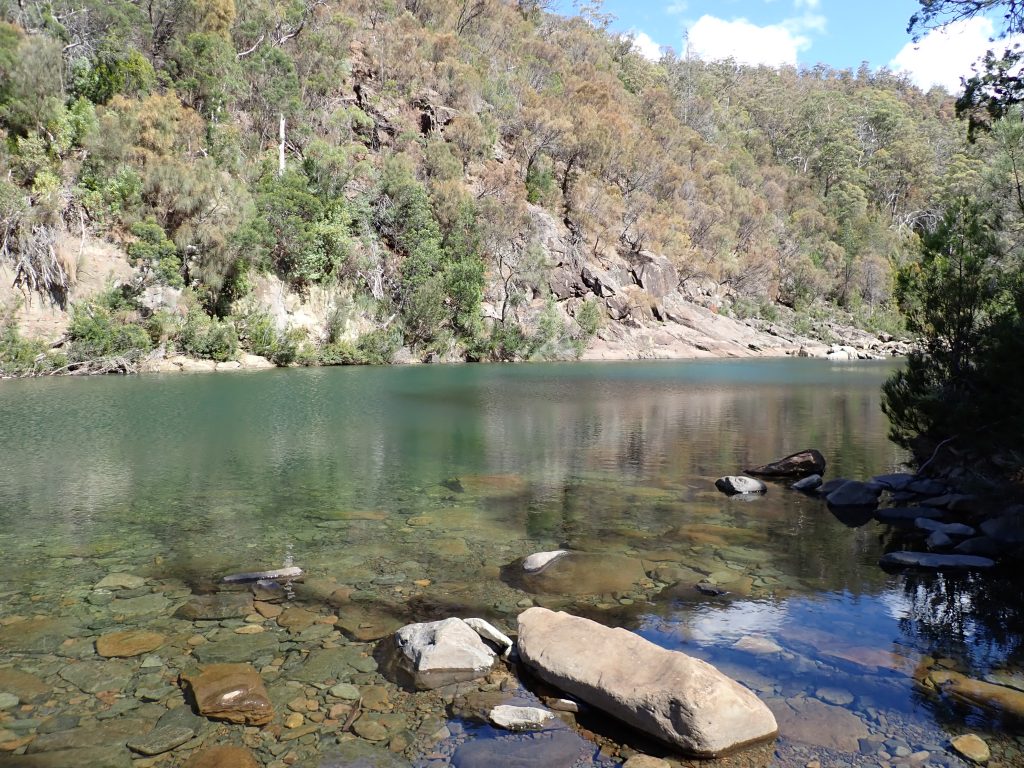
We then headed back to Bicheno. The town was named in honour of James Ebenezer Bicheno. He was the British Colonial Secretary for Van Diemen’s Land from 1843 to 1851. The town is now best known for fishing and also for the same reason penguins and it was the latter we were ‘hunting’. We had tried to book onto a tour, but they were all full, so we stopped by the office to see if they had any cancellations. They hadn’t but they gave us some helpful advice on where we could look, so we spent the remainder of the afternoon walking along a short section of the foreshore. This took us past a small local blowhole.
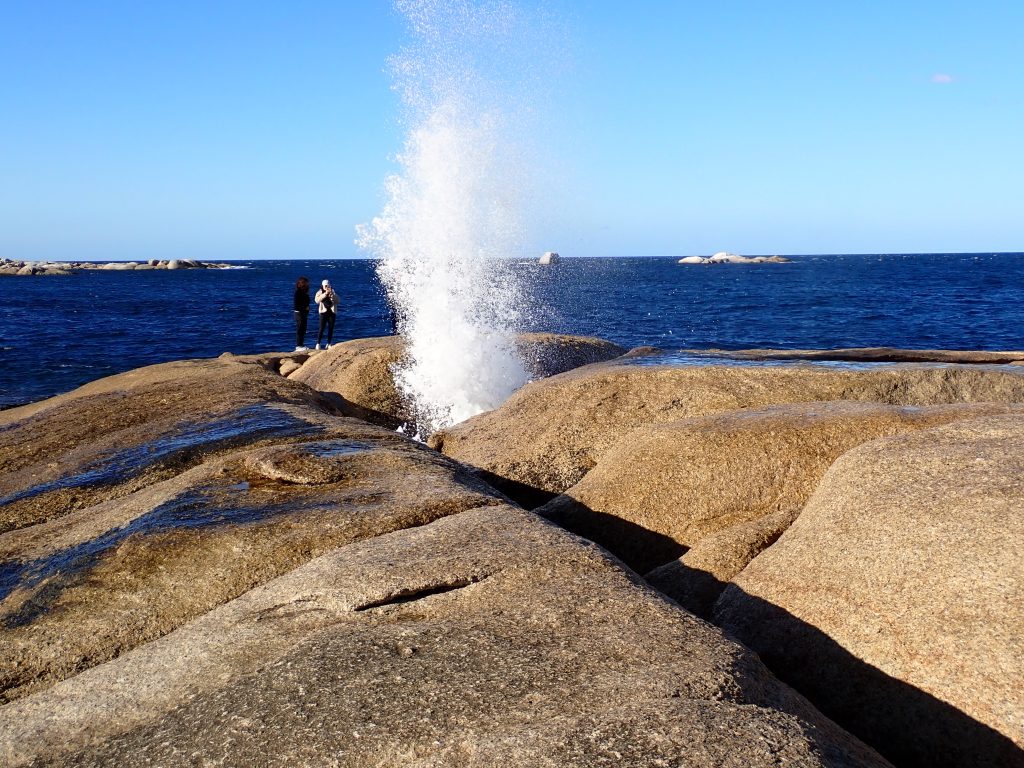
Further along we saw one possible place (a burrow with some evidence of moulting outside it), we went to ‘The Lobster Shack’ for supper and to wait for dusk. We returned at dusk and waited very quietly at a distance. We never saw the penguin come out of the water, but then suddenly saw it at the entrance to the burrow preening itself. We watched very quietly and carefully from a distance.
The penguins at Bicheno are fairy penguins – otherwise known as little penguins – for good reason as they are the smallest of all the penguins.
